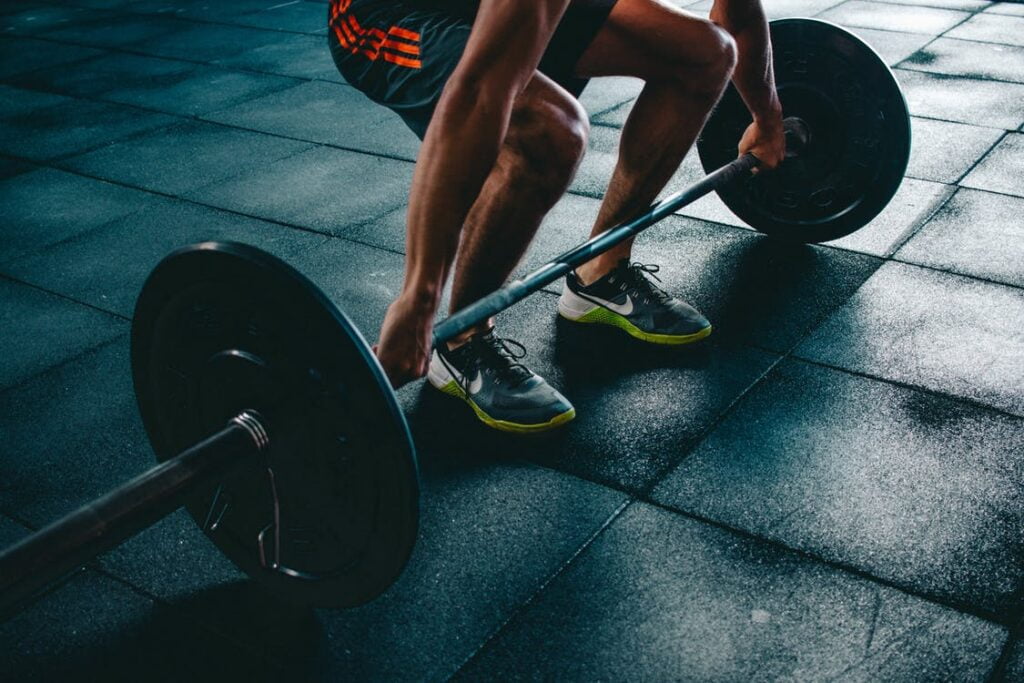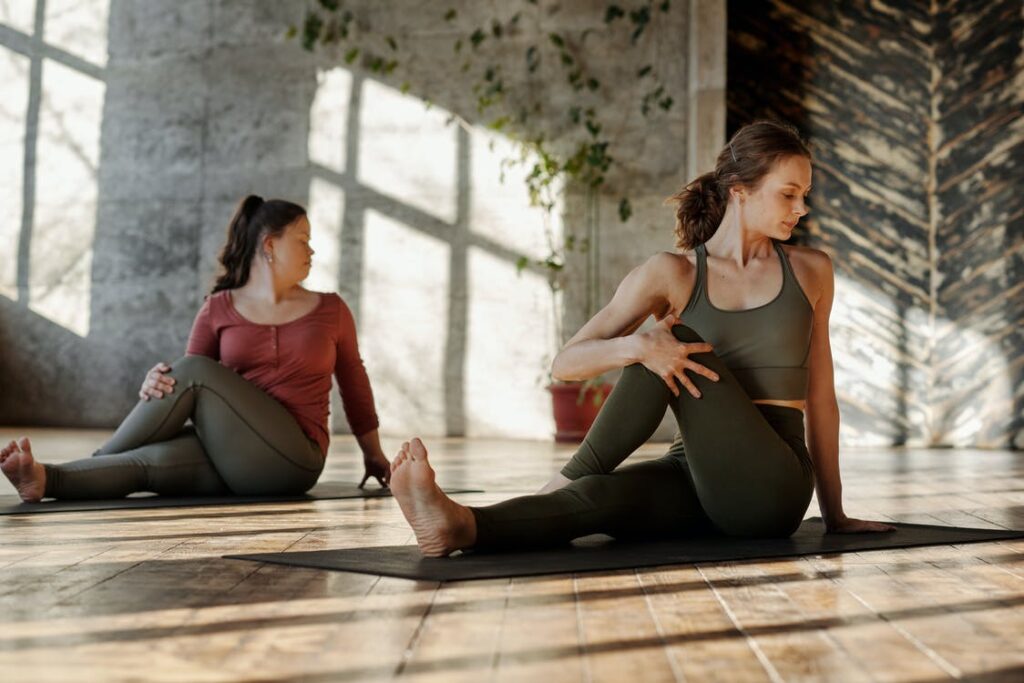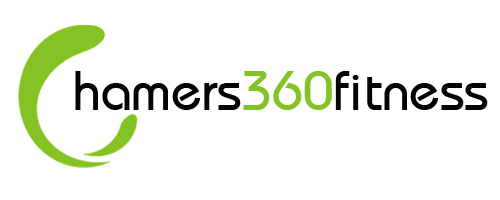Some of the most common questions that personal trainers and fitness professionals get asked include ‘What exercise is best?’ and ‘How often should I exercise?’ The answer to both of these questions are highly individual and depend on many factors including your individual goals for training, your current fitness levels and other lifestyle factors such as age and medical conditions. There are, however, a number of ‘components of fitness’ that we should be aiming to include in our training programmes and there are guidelines as to how often adults should be including activities that work on each component. With many of us building our own fitness schedules and routines at home for now, this blog aims to give you some guidelines and ideas for what to include and how often.
If I asked you to think of the fittest person you know, chances are you and I would choose somebody totally different and a friend or family member would pick someone else altogether. Some of us may think of a long-distance runner, whilst others would argue a sprinter was the epitome of fitness. Some may suggest a gymnast or even the world’s strongest man or woman and the truth is they all excel at fitness in different areas. Whilst athletes in certain fields will train certain components much more heavily, this blog is aimed at the general, adult public looking to live a healthy lifestyle with a good balance of fitness. Here we cover the 5 different components of HEALTH-RELATED FITNESS to consider when designing your own exercise programme and ensuring you include a balanced range of activities.
1. Cardiovascular fitness –This is the ability of the heart, lungs and muscles to take in, transport and utilise oxygen. It’s also referred to by terms such as aerobic fitness or stamina. Cardiovascular or ‘cardio’ activities increase the heart rate and breathing rate and use large muscles of the body in a continuous and rhythmic way. Such activities include walking, running, cycling, swimming and dancing and they help to improve the efficiency of the heart, lungs and circulatory system. For such results these activities need to be performed regularly, for an appropriate duration and at an appropriate intensity.
Frequency – 3-5 days a week. Intensity – Moderate to Vigorous (can be measured using heart rate or rate of perceived exertion). Time – 20-30 minutes dependent on intensity. Can be accumulated in shorter bouts.

2. Muscular strength – This can be defined as the maximal amount of force a muscle or group of muscles can generate during one contraction. It’s the maximum weight a person can lift for one repetition maximum (1 rep max). Strength training involves lifting heavier weights for a lower number of repetitions and so heavy weightlifting or moving heavy objects are an example of this. Strength training is useful as individuals are then able to produce a greater maximal force when required such as lifting or moving a heavy piece of furniture and everyday tasks such as carrying shopping seem easier as they require a smaller percentage of the individual’s maximal effort.
3. Muscular endurance – This is the ability of a muscle or group of muscles to contract repeatedly for extended periods of time without fatigue. Many everyday activities that require muscular effort and force involve muscular endurance such as maintaining good posture, carrying shopping and walking. Resistance training using lower weights for higher numbers of repetitions help to improve muscular endurance. It’s worth noting that there is a strength/endurance ‘continuum’ and where an exercise falls for each person will depend on individual factors. Someone who can just about perform one bodyweight squat would be building strength whereas somebody who can do many would be working on endurance. A personal trainer can offer further guidance with this and appropriate weights and numbers of sets and repetitions.
Benefits of resistance training include stronger muscles, tendons and ligaments, increased bone density and improved joint stability. Training muscles can also improve their tone, shape and physical appearance and can result in improved body composition (see below).
Frequency – 2-3 days a week for each major muscle group on non-consecutive days. Rest of 48 hours between training sessions for each muscle group (e.g. could alternate lower/upper body days or do cardiovascular or flexibility or rest days inbetween). Intensity – 40-80% of 1 rep max depending on age, experience and starting activity levels. A fitness professional can help with this or if a programme requires a certain number of sets/reps you should aim to find a weight that fatigues you by the end of each set but isn’t too heavy that you can’t complete the number of reps/sets advised. You should be able to perform all sets and reps with the correct technique at the chosen weight. Time – No specific duration for full session, more about suitable number of sets/reps. Can be performed interval or circuit style or with set rest periods between sets.

4. Flexibility – This is defined as the range of movement about a joint or series of joints. The range of movement will be influenced by the mobility of the soft tissues that surround the joint, including muscles, ligaments and tendons. It’s important to maintain appropriate levels of flexibility in order to allow a full, pain free range of motion and freedom of movement at all joints.
At 1 end of the flexibility spectrum we have immobile, stiff joints which can dramatically affect posture and impair daily functioning. Imbalanced exercise programmes that overdevelop one muscle group and neglect the opposing group can cause muscular imbalances that restrict flexibility. Other sports such as jogging, football and boxing can also reduce flexibility as joints aren’t routinely taken through their full range of movement. Hypermobility is at the other end of the spectrum and can reduce joint stability and increase risk of injury. Sports such as gymnastics, martial arts, yoga and dance can increase levels of flexibility as can regular stretching.
Frequency – 2-3 days a week or more, ideally daily. Intensity – stretch to the point of mild tension and mild discomfort. Time – there are different types of stretching but 2-4 reps of 10-30 secs (up to 60 secs) per muscle group is recommended. Older adults may benefit from longer durations.

5. Body Composition – The final component of health-related fitness is body composition. This is a measure of percentages of fat, muscle and bone in the human body. Generally, the body fat percentage is most commonly used as a measure of health.
Body composition explains why 2 people can be the same height and weight but may look very different in size and shape and also why someone may look and feel ‘slimmer’ and their clothes may feel bigger after embarking on a training programme but their weight may not change. Muscular tissue is more compact than fat tissue and this influences how lean people appear.
The point at which body fat becomes a risk to health varies according to factors such as age and ethnicity and many athletes may have lower than ‘optimal levels for health’ of body fat as this can enhance performance in some sports. If you want more advice on measuring or altering body composition, a personal trainer or fitness professional will be able to give you individually tailored advice.
When taking in the information in this blog it’s important to remember that untrained or deconditioned adults may need to work towards these recommendations and start with lower intensities and/or shorter durations. You may also need guidance on the correct posture or how to perform certain exercises, for which you should always seek professional advice. For all exercises, including stretching, you should make sure you are suitably warmed up before carrying them out. These guidelines are just that – guidance on the ideal frequency, intensity and duration of a variety of different fitness related activities and components. Whilst many of us will struggle to meet ideal guidelines, this blog is intended to offer advice and support in designing your own programme of fitness and ensuring you include a variety of activities to support all components of health-related fitness.
If there’s anything in particular in this blog that you’d like to know more about, feel free to contact me on Instagram @bevs_life .
Bev Meakin – Personal Trainer/ Exercise Referral Officer and Complementary Therapist.

